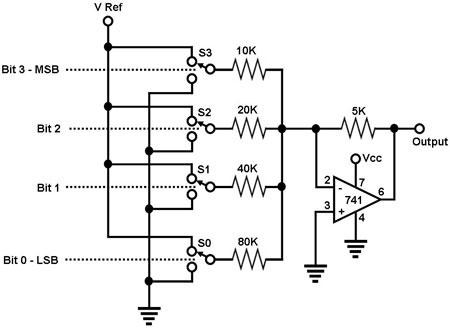How does a digital-to-analog converter (DAC) work?

A digital-to-analog converter (DAC) is a device that converts digital signals into analog signals. It is commonly used in various electronic systems, such as audio players, digital instruments, and communication devices. The process of converting a digital signal to an analog signal involves several steps. Here’s a high-level overview of how a typical DAC works:
- Input Digital Signal: The DAC receives a digital signal as input. This digital signal is usually in the form of binary data, where each bit represents a discrete value.
- Sample-and-Hold: The digital signal is first passed through a sample-and-hold circuit. This circuit samples the digital signal at regular intervals and holds each sample value until the next sample is taken. This process helps to reconstruct the continuous-time analog signal from the discrete digital samples.
- Digital-to-Analog Conversion: The sampled digital values are then fed into a digital-to-analog conversion circuit. The conversion circuit’s purpose is to convert the discrete digital values into continuous analog voltages or currents. There are different types of DAC architectures, such as resistor ladder DACs, delta-sigma DACs, and multiplying DACs, each with its own implementation details. However, the basic principle involves using the digital input to generate a corresponding analog output.
- Reconstruction Filter: The output of the DAC, which is an analog signal, may contain some unwanted high-frequency components due to the sampling process. To remove these unwanted components, a reconstruction filter is often used. The reconstruction filter attenuates the high-frequency components and reconstructs a smooth analog signal.
- Output Amplification: In some cases, the output signal from the DAC may need to be amplified to achieve the desired signal level. An amplifier is used to increase the power or voltage level of the analog signal before it is sent to the output device, such as a speaker or a display.
Overall, a DAC essentially takes a digital representation of a signal and converts it into a continuous analog signal that can be used by various analog systems or devices. The quality of the DAC, including factors like resolution, accuracy, and linearity, determines the fidelity of the analog signal produced.
mixos Edited answer 22 June, 2023

